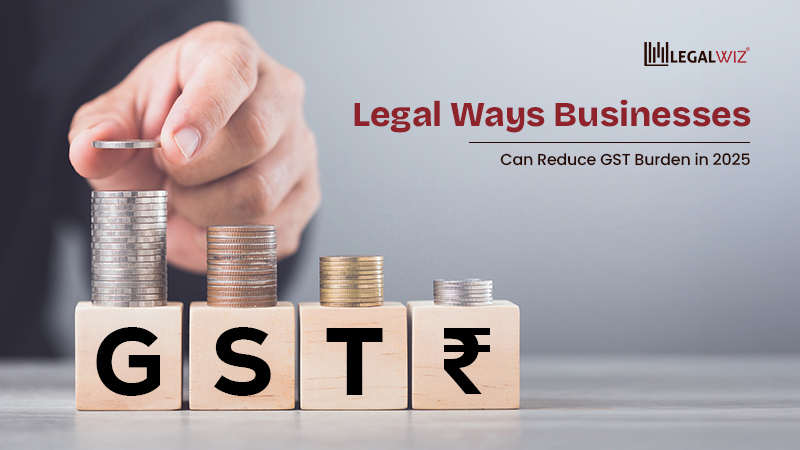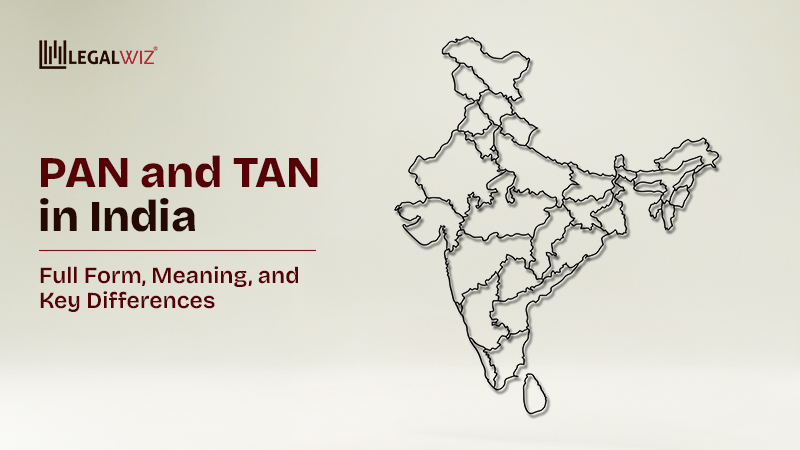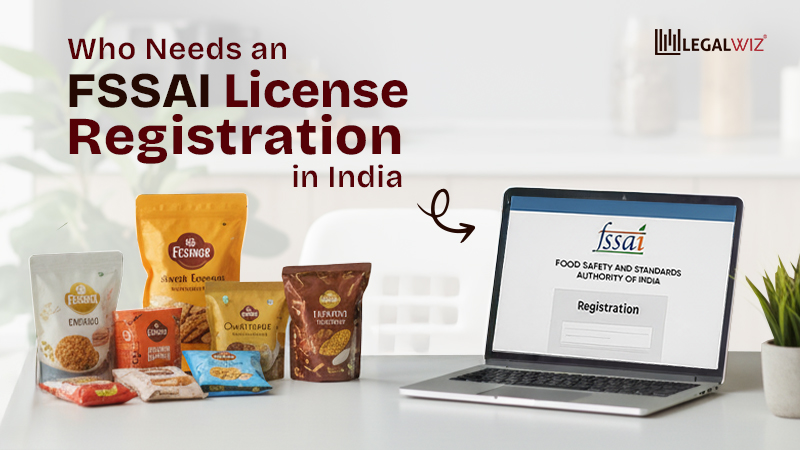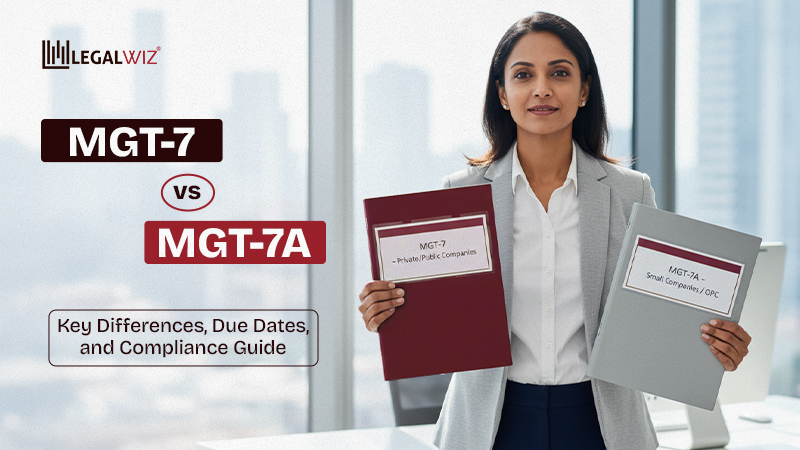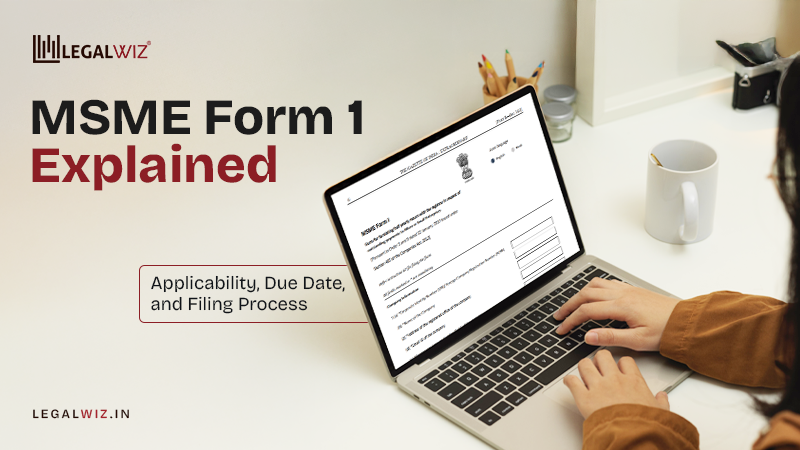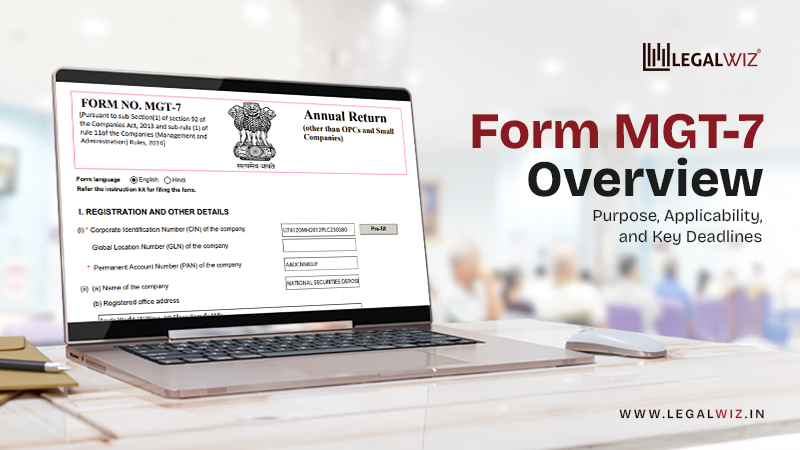Legal Ways Businesses Can Reduce GST Burden in 2025
For every business, GST can feel like a complex block. Here’s How to Legally Lighten the Load
To be honest, filing your GST Return might make you feel like you’re stuck in an endless email chain. Businesses often report feeling overwhelmed by paperwork because of the complexity of processes, the need to chase invoices, and the fear of fines.
The continual worry about paying too much or missing deadlines makes what should be a straightforward tax system seem more like a maze.
The good news is that filing GST isn’t as complicated as it may seem. Without breaking any laws, you may lessen your tax liability, recover any credits that are legally due, and even save money for your company if you know what you’re doing. Here in the blog, we’ll show you how to reduce your GST burden in 2025 in a straightforward and practical manner.
Section 1: GST 2.0 – The Game-Changer You Didn’t Know You Needed
The Goods and Services Tax (GST) is about to become far more intricate than you ever imagined. Businesses large and small may find life much simpler as of September 22, 2025, due to several major changes to the GST environment.
Here’s What’s New With the GST :
- Simplified tax brackets: No more confusing numerous rates. There are now just three rates for most products and services: 5%, 18%, and 40%. This makes computations easier and invoicing clearer.
- No more GST compensating cess: This additional tax on certain goods has been withdrawn, so you can save right now on things like tobacco, expensive automobiles, and fizzy drinks.
- Easier compliance: Filing taxes, reconciling invoices, and keeping track of payments is now easier, which makes dealing with administrative paperwork less of a pain.
- Exemptions for small companies: Some small firms may now take advantage of more exemptions, which makes it easier for them to pay their taxes and follow the rules.
Gaining a grasp of these changes is the first stride towards making use of them. Businesses will be able to lawfully decrease their GST outflow, save time and effort, and improve their planning capabilities with fewer rates to monitor, lower supplementary levies, and simplified compliance.
Understanding the GST 2.0 regulations is not only vital but also advantageous for your company. That’s why we have compiled a blog documenting everything discussed at the 56th GST Council Meeting. Read our complete guide to the latest GST 2.0 updates to stay informed about changes, updates, and everything in between.
Section 2: Small Business? Big Relief on GST!
Imagine this: you’re a small business owner, juggling invoices, clients, and that ever-growing pile of paperwork. Suddenly, a little legal magic drops in—exemptions designed just for you.
Here’s your toolkit of wins:
- GST exemption for tiny turnovers: Earn up to ₹40 lakh (₹20 lakh in special category states)? Congratulations, you’re officially free from GST registration. Fewer forms, fewer headaches, and more time to focus on the parts of your business you actually enjoy.
- No more GSTR-9 stress: From FY 2024–25 onward, will there be an annual GSTR-9 filing? Completely optional. That’s one less deadline lurking over your head.
- Quarterly filings, simplified: Choose the Composition Scheme and swap monthly chaos for quarterly ease. Pay a fixed rate, file less often, and breathe easier knowing compliance isn’t ruling your life.
Why it’s a win:
These reliefs aren’t just bureaucratic perks—they’re your ticket to reclaiming time, reducing costs, and freeing mental space to grow, experiment, and actually enjoy running your business. Small businesses finally get the legal edge without the overwhelm.
Also read: Understanding GST Minimum Turnover: A Comprehensive Guide
Section 3: Smart Strategies to Maximize Input Tax Credit (ITC)
Your business is paying GST on every purchase, but some of that money could come back to you—if only you play it smart.
Here’s how to turn ITC into a winning game:
- Invoice matching like a boss: Reconcile every invoice on time. Missed matches mean missed credits—so keep your books tidy and every rupee in check.
- Don’t let post-sale surprises bite you: Discounts after a sale can trigger ITC reversals if taxes aren’t adjusted. Stay alert, document changes, and keep that credit where it belongs.
- Documentation is your superpower: Bills, receipts, GST returns—store them properly. When it’s time to claim, your records make it smooth, safe, and audit-proof.
Why it matters:
Every planned step puts money back in your pocket. By maximizing ITC claims, you can save on taxes, improve cash flow, and manage your firm with fewer financial headaches. Think of it as following the rules today to reap the rewards tomorrow. For small businesses, it’s essential to understand all the GST composition schemes; this way, you can pay GST at a fixed percentage of your turnover instead of the standard rates that apply to various goods and services.
Section 4: Sector-Specific Savings on GST– Where to Look
Imagine spotting hidden discounts in the GST maze—these are the sector-specific savings that can boost your bottom line.
Treasure spots in the GST landscape:
- FMCG at 5%: Everyday essentials now carry a lighter tax load. Lower GST means better pricing power and happier customers.
- Medicines and medical devices: Health care becomes more affordable, giving businesses and consumers alike a welcome relief.
- Automobiles: With GST slabs adjusted, car and vehicle prices drop. Dealers and buyers both win, making big-ticket sales easier to manage.
Why it matters:
Understanding which sectors enjoy tax reductions allows businesses to plan smarter, price competitively, and claim advantages before competitors even notice. For example, if you understand the GST rates for restaurants as an owner, it can help you pay the right taxes and save money. These savings aren’t just numbers—they’re actionable levers to optimize operations and boost profitability.
Ready to Cut Your GST Bill? Start with LegalWiz
Think of your GST bill as a garden; sometimes it grows wild, and trimming it can feel tricky. LegalWiz is here to help you take control.
Your Action Plan with LegalWiz:
- Review your compliance: LegalWiz helps you check your current GST status, spotting gaps, errors, or missed credits before they cost you.
- Get expert guidance: Our tax professionals identify savings you might miss. A fresh pair of eyes can make all the difference.
- Stay ahead of GST changes: With LegalWiz updates, you never miss new reforms or exemptions, keeping your business optimized.
Also, knowing the common mistakes to avoid while filing GST can save you from a lot of legal hassle. Being proactive with LegalWiz is about more than just compliance—it’s about reclaiming cash, improving cash flow, and freeing up resources so you can grow your business smarter, not harder.
Conclusion: Your GST Burden Doesn’t Have to Be Forever
Filing your GST return might look like a pile of paperwork and a time-consuming task for your company. But turning your back on it won’t work in your favour—it will backfire for sure. Do you want to take that chance? Filing these annual compliances can be tricky ground, but with the right guidance, you can handle it.
You can learn how to save money via GST return filing by understanding these annual forms, maximizing your Input Tax Credit (ITC), and discovering the best ways to save money tailored to your industry.
But here’s the thing… if you want to lift this burden and avoid all the hassle, bring in the experts. Hand over these headaches to them, and channel your energy into what really matters, where your expertise shines.
With our professionals, you can stay on top of GST requirements, prevent costly mistakes, and keep your company running smoothly.
Frequently Asked Questions
What is the GST exemption for small businesses?
Businesses that make less than ₹40 lakh a year (or ₹20 lakh in special category states) may not have to register for GST.
If I'm a small company, do I have to submit GSTR-9?
No. Starting in FY 2024–25, small enterprises won’t have to file the GSTR-9 every year.
Which industries gain from lower GST rates?
The GST rates on FMCG goods (5%), medications and medical equipment, and cars are lower. This might save companies and consumers money.
How can I get the most out of my Input Tax Credit (ITC)?
Match invoices on time, adjust post-sale discounts with accurate tax records, and save supporting paperwork for all claims.
Why should businesses focus on a GST strategy?
Proactive GST management lowers taxes, increases cash flow, makes sure the organization is following the rules, and frees up resources to help it develop.
How can LegalWiz help me pay less GST?
LegalWiz checks for compliance, finds ways to save money, gives professional advice, and keeps firms up to speed on GST changes and exclusions.

Sapna Mane
Sapna Mane is a skilled content writer at LegalWiz.in with years of cross-industry experience and a flair for turning legal, tax, and compliance chaos into clear, scroll-stopping content. She makes sense of India’s ever-changing rules—so you don’t have to Google everything twice.
